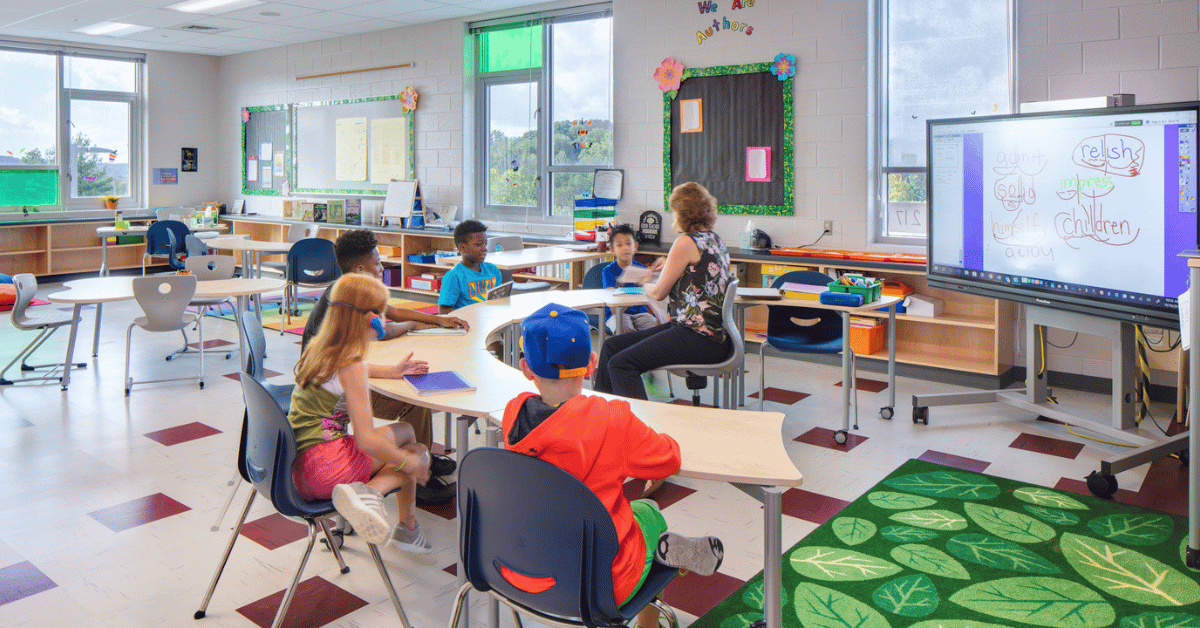A classroom relay is an interactive teaching technique where students participate in a sequence of tasks, passing responsibility from one participant to the next in a race-like format. In its most traditional form, this activity is seen in physical education classes, where running or object-passing builds teamwork and coordination. However, in modern classrooms—both physical and virtual—the relay has evolved into a versatile educational tool that can apply to mathematics, language learning, problem-solving, and even digital project management. The concept blends competition with collaboration, creating a unique dynamic that motivates students to participate actively. By incorporating clear objectives and measurable outcomes, classroom relays encourage focus, speed, and accuracy while fostering a sense of shared responsibility. Whether it’s students racing to complete a sentence on the board, passing a digital document in an online workspace, or competing in a quiz-style relay, the method enhances engagement and retention. This article explores every aspect of classroom relays—how they work, how to organize them, different variations, their educational impact, and practical strategies for maximizing their benefits in both physical and digital learning environments.
What is a Classroom Relay?
A classroom relay is structured around a chain of sequential actions performed by different students or teams, with the completion of one task triggering the start of the next. Unlike solitary activities, relays depend on group coordination, timing, and a shared goal. This can involve physical movement, such as running to a board to write an answer, or digital movement, like passing a file to the next team member in an online collaborative task. The essential element is the structured sequence: one student cannot begin their part until the previous student finishes. This makes every participant equally important to the team’s success. Teachers often set specific learning objectives that are embedded within each leg of the relay, ensuring that the competition is not just fun but educational. The format’s flexibility allows it to be adapted for any age group or subject, from preschool counting games to university-level problem-solving challenges.
Historical Background of Relay in Education
While relay races have been a part of athletic tradition for centuries, their integration into classrooms for academic purposes is relatively modern. The shift began as educators looked for ways to combine movement with learning, inspired by kinesthetic teaching theories that emphasized the link between physical activity and cognitive retention. In the early 20th century, progressive educators started introducing physical tasks related to academic subjects—spelling relays, math problem relays, and vocabulary passing games. With the rise of digital education tools in the 21st century, relays expanded into the virtual space, allowing for asynchronous participation and geographically diverse teams. These digital adaptations maintain the spirit of competition but replace running tracks with shared documents, timed quizzes, or coding challenges. The core principles—sequential participation, time pressure, and teamwork—remain consistent, showing that the relay format is less about the medium and more about the collaborative structure.
Benefits of Classroom Relay Activities
The advantages of classroom relay activities extend beyond simply making lessons more entertaining. From a psychological standpoint, the competitive yet cooperative nature encourages students to focus under pressure, which can translate to better performance in exams and group projects. Physically, relays can improve motor skills, especially in younger students. Socially, they foster communication, trust, and peer support, as success relies on each member doing their part effectively. Academically, relays enhance retention because the active involvement and repeated exposure to material strengthen memory pathways. Teachers also find relays to be a diagnostic tool—watching how students perform under time constraints can reveal learning gaps or highlight leadership qualities. When designed thoughtfully, relays promote inclusivity by assigning roles suited to each student’s strengths, ensuring everyone can contribute meaningfully. This balance of fun, learning, and teamwork makes relays a powerful tool in both traditional and modern classrooms.
Types of Classroom Relays
| Relay Type | Description | Setting |
|---|---|---|
| Physical Task Relay | Students complete a physical activity before passing to the next teammate. | In-person |
| Academic Quiz Relay | Sequential answering of academic questions under time pressure. | In-person/Online |
| Writing Relay | Students contribute sequentially to a piece of writing. | Both |
| Digital File Relay | Tasks are passed digitally in collaborative platforms. | Online |
| Creative Build Relay | Teams build or create something in stages. | Both |
How to Organize a Successful Classroom Relay
Designing a classroom relay requires careful planning to ensure both fairness and engagement. The first step is defining the educational goal—what skill or knowledge the relay will reinforce. Next, divide the class into balanced teams, considering both skill levels and personalities to maximize cooperation. Prepare the relay stations or digital stages in advance, ensuring smooth transitions between tasks. Clear instructions are vital; every student must understand their specific role and how it fits into the overall challenge. Time limits should be fair yet challenging, creating excitement without causing excessive stress. A visible scoreboard or progress tracker can help maintain engagement. Teachers should also plan for quick debriefs after each relay, discussing strategies, challenges, and lessons learned. This reflection stage reinforces the educational purpose, turning the fun competition into a meaningful learning experience.
Physical vs. Digital Classroom Relays
| Feature | Physical Relay | Digital Relay |
|---|---|---|
| Engagement Style | Movement-based, high physical energy | Screen-based, collaborative tool use |
| Setup Requirements | Space, props, physical materials | Computers, internet, collaborative software |
| Best For | Younger students, physical learning integration | Remote classes, project-based tasks |
| Challenges | Safety, space limitations | Technical issues, internet connectivity |
| Feedback Speed | Immediate, visible to all | Often delayed, depending on platform |
The Role of Competition in Learning
Competition, when managed positively, can be a powerful motivator in educational settings. Classroom relays introduce a friendly form of competition that encourages students to push themselves without fostering resentment. The time-based nature of relays keeps participants alert and engaged, but the team element ensures that success is shared rather than individualistic. This collective pressure often leads to increased effort from all participants, as no one wants to let their team down. Teachers must, however, monitor the competitive environment to ensure it remains constructive. Celebrating participation, creativity, and improvement alongside victory prevents overemphasis on winning. Research in educational psychology supports the idea that cooperative competition—where teams work together towards a goal—enhances both social skills and academic outcomes, making relays an ideal format for this balance.
Variations of Classroom Relays
Classroom relays can be adapted in countless ways, making them suitable for nearly any subject or age group. In mathematics, a relay might involve solving a chain of problems, with each correct answer unlocking the next step for a teammate. Language arts relays could have students take turns adding to a story, sentence by sentence, requiring both creativity and grammar skills. Science relays might involve assembling parts of an experiment in order, ensuring safety and accuracy at each step. For younger children, relays can be simplified to matching shapes, identifying colors, or reciting rhymes. In the digital sphere, variations include timed document editing, online trivia chains, and shared whiteboard problem-solving. By tweaking rules, difficulty levels, or the type of tasks involved, educators can keep the format fresh and engaging over time. This flexibility ensures relays remain a sustainable, recurring feature in lesson plans.
Subject-Specific Relay Examples
Subject-specific relays ensure that activities directly reinforce curriculum objectives. In history, students could pass along key dates or events, creating a chronological timeline as a team. In geography, each student might identify the location of a city on a map before passing to the next participant. Literature classes could use quote-completion relays, where students recall lines from texts studied. In science labs, relays might involve assembling molecular models or conducting quick measurement tasks. For art, a relay could involve collaborative drawing, with each student adding an element to a shared piece. Even physical education can integrate academics by having students answer questions between running segments. The key is to merge academic rigor with the relay’s interactive format so that the energy and excitement serve the learning goals rather than overshadowing them. This targeted design transforms relays from mere games into impactful learning tools.
Strategies for Teachers to Maximize Effectiveness
For teachers, the success of a classroom relay depends on thoughtful planning and active facilitation. One effective strategy is to assign mixed-skill teams so stronger students can support peers who might need more guidance. Rotating roles ensures every student experiences different aspects of the activity—starter, middle runner, and finisher—developing adaptability. Using visual aids like timers or progress boards enhances transparency and motivation. Teachers should also provide immediate feedback between rounds, highlighting strengths and offering quick corrective tips. Building in reflective discussions after the activity helps students analyze their strategies and performance, reinforcing the educational content. Flexibility is also crucial; if a relay is too easy or too difficult, adjustments should be made on the spot to maintain engagement. By acting as both organizer and motivator, teachers can turn relays into not just games but purposeful, memorable learning experiences.
Adapting Relays for Special Needs Education
In inclusive classrooms, relays must be adapted to accommodate diverse learning needs. For students with mobility challenges, physical elements can be replaced with desk-based tasks or digital activities that maintain the sequential nature of a relay. Visual cues, enlarged text, or audio prompts can assist students with sensory impairments. Timelines can be adjusted to reduce pressure without removing the excitement. For neurodiverse students, clear and consistent rules, coupled with predictable task formats, can make participation more comfortable. Collaboration with special education staff can yield creative adaptations—such as integrating tactile materials for sensory learners or using assistive technology for digital relays. These adjustments ensure that every student experiences the social, cognitive, and motivational benefits of a relay. Inclusivity not only broadens participation but also teaches all students empathy, patience, and respect for different abilities.
Using Digital Tools to Enhance Classroom Relays
Digital technology has opened new possibilities for classroom relays, especially in blended or remote learning environments. Tools like Google Docs, Microsoft Teams, and online whiteboards allow students to contribute sequentially to a shared task in real time. Gamified quiz platforms such as Kahoot! or Quizizz can be adapted into relay formats, where points accumulate for team performance. Video conferencing breakout rooms can simulate relay stages, passing control or documents between groups. Timed collaborative coding platforms allow programming students to solve challenges one function at a time. The advantage of digital relays is that they can easily be recorded and reviewed, offering valuable insights for teachers and students alike. Furthermore, technology removes geographical constraints, enabling inter-school or even international relays that expand cultural exchange and collaboration skills beyond the local classroom setting.
Psychological Impact on Students
The psychological effects of classroom relays are multifaceted, impacting motivation, confidence, and resilience. For many students, the format provides a safe introduction to public performance—answering a question in front of peers, for instance—because responsibility is shared among the team. The quick transitions and visible progress foster a sense of accomplishment, reinforcing positive attitudes toward learning. In cases where mistakes occur, the relay structure encourages resilience, as the team must adapt quickly to stay competitive. This shared challenge can strengthen peer relationships, especially in diverse groups where students learn to value each other’s contributions. On the flip side, without careful moderation, the competitive nature can induce stress in more anxious students. Balancing competitiveness with encouragement ensures the experience remains positive, helping students internalize the idea that learning is both collaborative and rewarding.
Common Mistakes to Avoid in Classroom Relays
Even well-intentioned relays can fail if certain pitfalls are not addressed. Overcomplicating the rules is a common error, leading to confusion and wasted time. Similarly, failing to match the difficulty level to the class’s abilities can result in disengagement—too easy, and the activity feels trivial; too hard, and frustration takes over. Ignoring pacing can also derail a relay; long waits between turns reduce excitement. Another frequent mistake is not ensuring equal participation—some students may dominate while others remain passive. Finally, neglecting the educational purpose and focusing solely on competition can make relays feel like filler activities rather than meaningful lessons. Avoiding these mistakes requires clear instructions, balanced task design, active teacher monitoring, and a deliberate focus on learning objectives throughout the activity.
Real-World Examples of Successful Classroom Relays
Across educational levels, teachers have found creative ways to implement relays that resonate with students. In one middle school science class, students completed a circuit-building relay, each adding a component until the circuit lit a bulb. In a high school language course, a story-writing relay produced a class anthology in a single lesson. Online, a geography relay connected classrooms from different countries, where each group provided clues about their homeland for the others to guess. Even professional training programs use relays—business simulations where teams pass along decision-making tasks under tight deadlines mirror real corporate workflows. These examples highlight the adaptability of the format and its ability to engage learners through active participation and mutual reliance, proving that relays are not limited to young learners or informal settings.
Long-Term Educational Value
When integrated regularly, classroom relays can contribute to long-term skill development that extends beyond academic knowledge. Students build time-management skills, as they learn to complete tasks under pressure without sacrificing quality. Teamwork becomes second nature, with students recognizing the importance of communication and trust. The incremental challenges of relays mirror real-world problem-solving, where individuals often contribute to a larger project in stages. Over time, students develop resilience, adaptability, and a growth mindset, as each relay experience reinforces the idea that setbacks can be overcome with persistence and cooperation. For teachers, observing students in relays provides ongoing insight into class dynamics, individual strengths, and areas needing support. This dual benefit—for both learners and educators—makes relays an enduring and impactful teaching strategy.
Conclusion
Classroom relays, whether physical or digital, represent a powerful intersection of engagement, collaboration, and purposeful learning. Their adaptability means they can be tailored to nearly any subject, age group, or educational environment, from early childhood classrooms to professional development workshops. By combining competition with cooperation, they foster both cognitive and social skills, creating a dynamic learning atmosphere where every participant matters. The format’s reliance on sequential contribution encourages students to take ownership of their role, while the collective goal promotes unity and shared success. As technology continues to reshape education, digital relays offer new opportunities for global collaboration and creative problem-solving, without losing the core values of the original concept. As one educator noted, “When students race together toward understanding, the finish line becomes a shared achievement.” Another teacher put it simply: “A good relay turns learning into a team sport.” In an era that values both individual excellence and collaborative ability, classroom relays are not just activities—they are essential tools for building the skills and mindset students need for the future.
FAQs
1. What is a classroom relay and how does it work?
A classroom relay is an educational activity where students complete tasks in a specific sequence, passing the responsibility to the next teammate once their part is done. It can involve physical movement, like running to a board to write an answer, or digital collaboration, such as contributing to a shared online document. The key element is teamwork—each member’s performance directly affects the team’s overall success.
2. Can classroom relays be used in online learning?
Yes, classroom relays can easily be adapted for virtual environments. Using tools like Google Docs, shared whiteboards, or online quiz platforms, teachers can replicate the sequential participation and time-based excitement of physical relays. Breakout rooms in video conferencing software can also simulate the “passing” stage in an online setting.
3. What subjects work best for classroom relays?
Classroom relay are versatile and can be adapted for almost any subject, including math, science, language arts, history, and art. The format works best when each step in the relay contributes to an overall goal—solving a problem, creating a story, or building a project—making it both interactive and educational.
4. How can teachers ensure all students are engaged in a relay?
To keep all students engaged, teachers should rotate roles, mix skill levels in teams, and assign tasks that cater to different strengths. Clear instructions, visible progress tracking, and immediate feedback also help maintain excitement. Ensuring that each role is essential to the team’s success prevents passive participation.
5. Are classroom relays suitable for students with special needs?
Yes, with thoughtful adaptations, relays can be inclusive. Tasks can be modified to suit mobility, sensory, or cognitive needs. For example, physical tasks can be replaced with desk-based activities, and assistive technology can be used in digital relays. Inclusivity not only broadens participation but also enriches the learning experience for all students.











